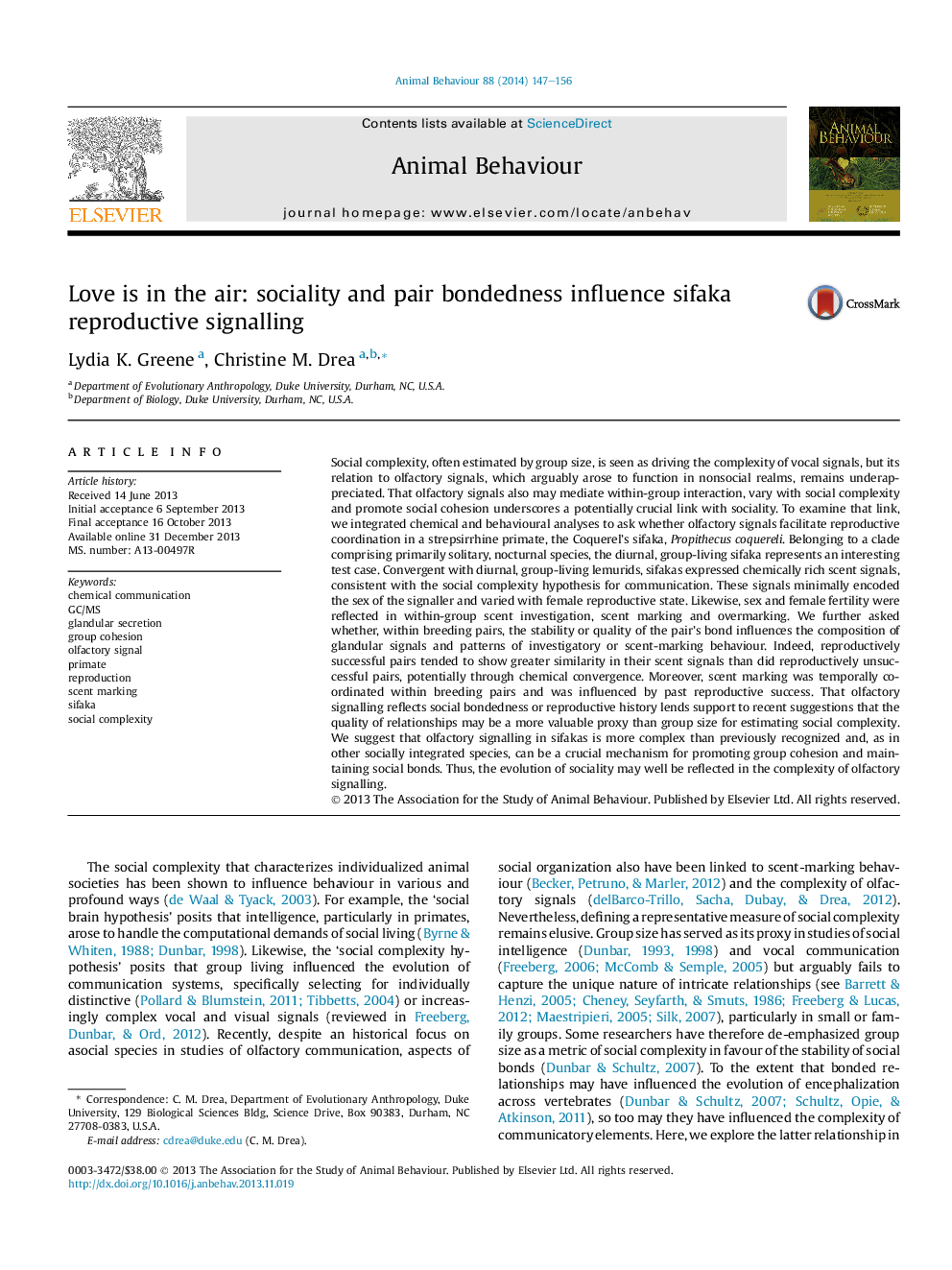| کد مقاله | کد نشریه | سال انتشار | مقاله انگلیسی | نسخه تمام متن |
|---|---|---|---|---|
| 8490725 | 1552240 | 2014 | 10 صفحه PDF | دانلود رایگان |
عنوان انگلیسی مقاله ISI
Love is in the air: sociality and pair bondedness influence sifaka reproductive signalling
ترجمه فارسی عنوان
عشق در هوا است: اجتماعی بودن و ارتباط جفتی، سیگنال تولید مثل سیفاکا را تحت تاثیر قرار می دهد
دانلود مقاله + سفارش ترجمه
دانلود مقاله ISI انگلیسی
رایگان برای ایرانیان
کلمات کلیدی
موضوعات مرتبط
علوم زیستی و بیوفناوری
علوم کشاورزی و بیولوژیک
علوم دامی و جانورشناسی
چکیده انگلیسی
Social complexity, often estimated by group size, is seen as driving the complexity of vocal signals, but its relation to olfactory signals, which arguably arose to function in nonsocial realms, remains underappreciated. That olfactory signals also may mediate within-group interaction, vary with social complexity and promote social cohesion underscores a potentially crucial link with sociality. To examine that link, we integrated chemical and behavioural analyses to ask whether olfactory signals facilitate reproductive coordination in a strepsirrhine primate, the Coquerel's sifaka, Propithecus coquereli. Belonging to a clade comprising primarily solitary, nocturnal species, the diurnal, group-living sifaka represents an interesting test case. Convergent with diurnal, group-living lemurids, sifakas expressed chemically rich scent signals, consistent with the social complexity hypothesis for communication. These signals minimally encoded the sex of the signaller and varied with female reproductive state. Likewise, sex and female fertility were reflected in within-group scent investigation, scent marking and overmarking. We further asked whether, within breeding pairs, the stability or quality of the pair's bond influences the composition of glandular signals and patterns of investigatory or scent-marking behaviour. Indeed, reproductively successful pairs tended to show greater similarity in their scent signals than did reproductively unsuccessful pairs, potentially through chemical convergence. Moreover, scent marking was temporally coordinated within breeding pairs and was influenced by past reproductive success. That olfactory signalling reflects social bondedness or reproductive history lends support to recent suggestions that the quality of relationships may be a more valuable proxy than group size for estimating social complexity. We suggest that olfactory signalling in sifakas is more complex than previously recognized and, as in other socially integrated species, can be a crucial mechanism for promoting group cohesion and maintaining social bonds. Thus, the evolution of sociality may well be reflected in the complexity of olfactory signalling.
ناشر
Database: Elsevier - ScienceDirect (ساینس دایرکت)
Journal: Animal Behaviour - Volume 88, February 2014, Pages 147-156
Journal: Animal Behaviour - Volume 88, February 2014, Pages 147-156
نویسندگان
Lydia K. Greene, Christine M. Drea,
